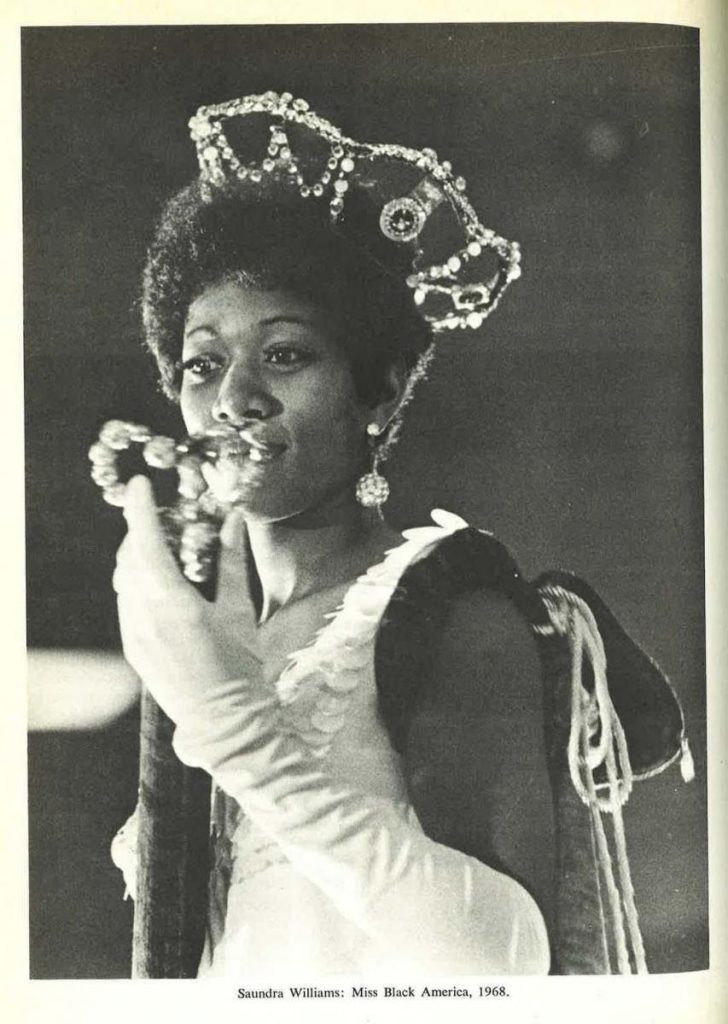
By Catherine Lammersen, Capstone Student & Curatorial Intern
Every fall, art history majors and minors complete their senior capstone, a unique project between the Art & Architecture History department and the Miami University Art Museum that allows the students in the capstone to curate an exhibit from start to finish – from picking the individual artworks to determining wall color and artwork placement. The most recent Art & Architecture History Capstone exhibition, Reflections: Visual Constructions of Race, gave me and my peers the opportunity to examine the implications of cultural and racial exchange through art that represents the self, the other, and the hybridity of the self and the other.
As we continue into Black History Month, we reflect on art that captures the spirit of the Black experience in America – particularly, moments of celebration within the Black community.
One of my favorite pieces in the exhibition is Beauty Queen, a 1972 photorealistic painting by Michael Mau, a German artist. The painting is very large – it takes up almost an entire 8-foot wall – and portrays three young Black women riding in the backseat of a bluish convertible through a street in a parade. The scene is bright, youthful, and joyful; unlike other photorealistic works, the focus is not on the cars or the buildings in the scene. Instead, it sits squarely on the three Black beauty queens in the convertible as they smile and wave in their gowns, while the brightness of the whites and blues surrounding them uplift the setting.
Both the name and the content of the painting suggest that it depicts a celebratory parade for three beauty pageant winners. In 1968, in response to the historically white Miss America pageant, the first-ever Miss Black America beauty pageant was held in Atlantic City, organized by Philadelphia philanthropist J. Morris Anderson with the support of the NAACP. On Sept. 8, 1968, 19-year-old Saundra Williams was crowned as the first Miss Black America on the same day that the white Miss America was crowned. Though Beauty Queen is likely not of the 1968 or 1969 Miss Black America winners and their runners-up, the painting nonetheless captures a moment of pride in the Black community, clearly written in the unbridled joy of the smiles on the girls’ faces.
An analysis of photorealistic works from the 1960s, ‘70s, and ‘80s reveals an interesting pattern of artistic styles unique to individual artists. Photorealists in the ’70s especially tended to paint in niche styles tailored to their own interests. Many of these styles were repetitions of specific scenes: cars in a parking lot, city streets, and diners were popular subjects of the style.
Yet absent from these scenes – especially the ones that do include people – are people of color. The process of painting in the photorealistic style requires the artist to be intentional about the scenes they choose to paint; perhaps choosing a picture portraying Black Americans experiencing a moment of joy and pride demonstrated Mau’s desire to expose the style for excluding Americans of color.
Reflections: Visual Constructions of Race focuses on artistic expressions of identity within different cultures. Much of the art included in the exhibition is rooted in heavy topics, moments of suffering, and instances of racial, ethnic, and cultural conflict and strife. These pieces, although often challenging to talk about, are important to include because they can serve as opportunities for education and as means to start conversations about our own racial, ethnic, and cultural identities. It is equally as important, however, to include artworks that are joyful; Beauty Queen is joyful, capturing a celebratory moment of Black pride.
On the night she was crowned Miss Black America in 1968, Saundra Williams told the New York Times, “This is better than being Miss America… With my title, I can show Black women that they too are beautiful.”
Mau has captured that pride in Beauty Queen, celebrating Black women and marking a significant contribution in the inclusion of Americans of color in a historically white artistic style.

https://hsp.org/blogs/fondly-pennsylvania/contesting-miss-america-boardwalk-protests-1968
1Judy Klemesrud, “There’s Now Miss Black America.” New York Times, September 9, 1968.
